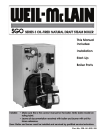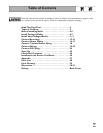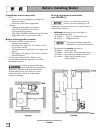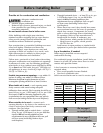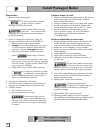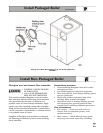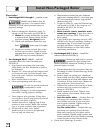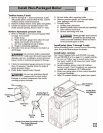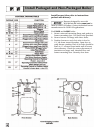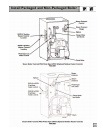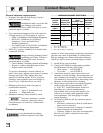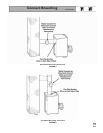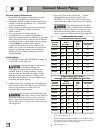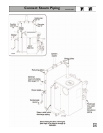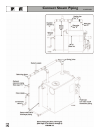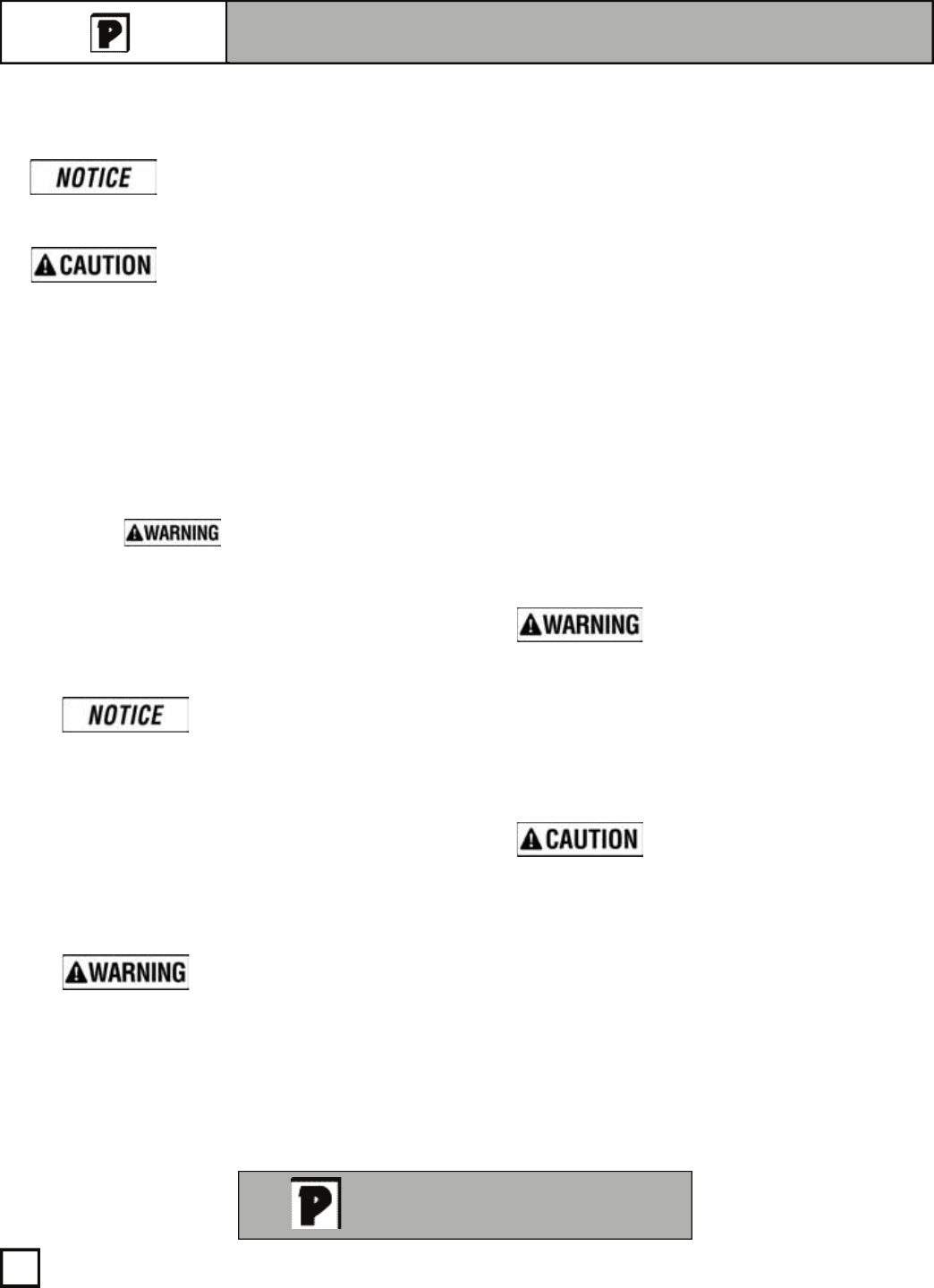
Place boiler:
1. Remove boiler from pallet.
Do not drop boiler or bump
jacket on floor or pallet.
Damage to boiler can result.
Smaller sized boilers may be
top heavy. Use caution when
handling to avoid minor personal injury or
property damage.
2. Boiler is shipped for back flue outlet. To
change to top flue outlet (see FIGURE 2):
a. Remove jacket cap on top of boiler.
b. Loosen two screws holding flue cap strap
to collector hood. Remove strap and flue
cap from opening. Re-tighten screws.
c. Check rope placement inside flue cap.
(Read under step #5 below).
d. Loosen two screws on back flue outlet. Set
flue cap on outlet. Install strap by engaging
slots in screws. Tighten screws. Make sure
cap is securely installed.
e. Snap jacket cap in back outlet opening.
Jacket cap must be in place
on boiler to avoid requiring
an 18" minimum clearance from back of
boiler to combustible material.
3. Check level. Shim legs, if needed.
4. Check for secure placement of insulation on
target wall, chamber floor and burner door.
5. Visually check:
a. Flue collector hood seal.
b. Burner mounting door seal.
Obtain gas-tight seal to
prevent possible flue gas
leakage and carbon monoxide emissions,
which can lead to severe personal injury
or death.
Tankless heater, if used:
1. Remove tankless heater knockout in left side of
jacket panel and, for SGO-6 only, tankless
heater control knockout.
2. Remove tankless heater cover plate and gasket.
3. Install new gasket and tankless heater over
studs around opening. Secure with
3
/8" nuts.
4. Install tankless heater operating control
where shown on page 18. If not furnished,
use operating control with maximum
10°F differential.
Perform hydrostatic pressure test:
1. Remove steam pressure gauge furnished with
boiler. Install water pressure gauge for test
only. Be sure gauge can handle test pressure.
2. Install air vent in tapping on top of boiler.
3. Remove pressure control and low water cutoff.
Plug tappings.
4. Plug supply and return tappings.
5. Drain valve is already factory-installed.
6. Fill boiler. Vent all air. Pressure test boiler at
45-55 psig.
Do not leave boiler unattended.
Cold water fill can expand and
damage cast iron, resulting in severe personal
injury, death or substantial property damage.
7. Check for maintained gauge pressure for more
than 10 minutes. Visually check for leaks if
gauge pressure drops.
8. Drain boiler. Repair leaks if found.
Using petroleum-based
compounds to repair leaks can
damage system components, resulting in
property damage.
9. Retest boiler after repairing leaks.
10. Remove pressure gauge, air vent and plugs.
Re-install steam pressure gauge, pressure control
and low water cutoff furnished with boiler.
6
Go to page 12 to connect
breeching and venting
Install Packaged Boiler



